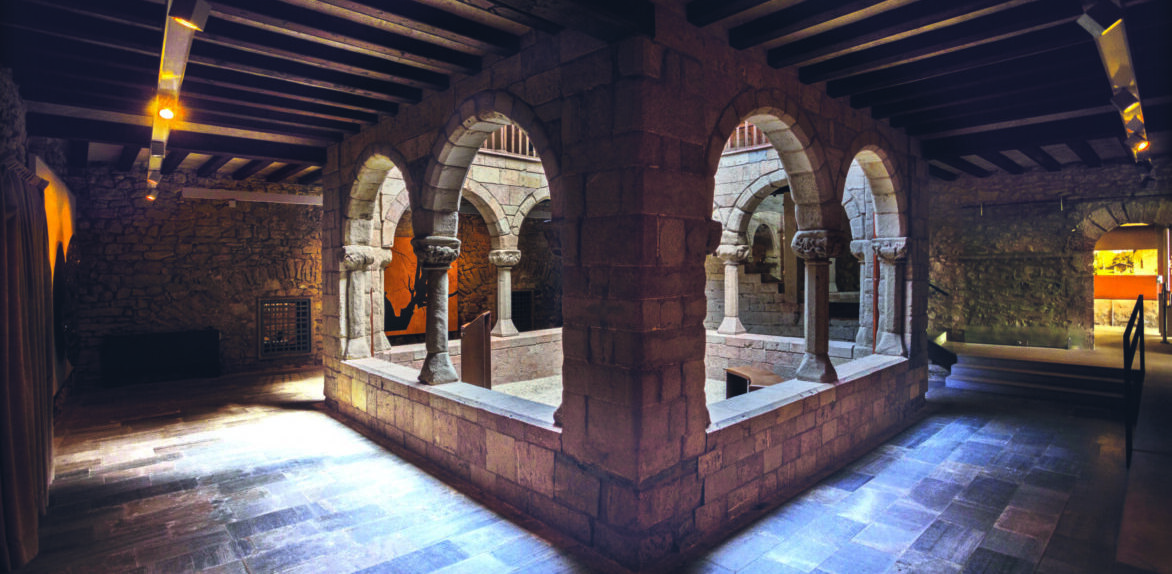The Abbatial Palace, like the one we see now, is the result of a long succession of constructions and renovations that began in the 14th century, when Abbot Pere de Soler gave shape to the existing dependencies of the monastery where he resided. It would be another abbot, Arnau de Vilalba, who in the 15th century would enoble the house with Gothic elements and the construction of the small cloister that connects the different parts of the palace.
After being totally renovated, the Abbatial Palace now houses the Tourist Office, as well as the following exhibition spaces:
The Interpretation Centre of the Myth of Count Arnau
Permanent exhibition that provides the keys to understand the origin and evolution of the figure of Count Arnau from a perspective covering folklore, history, music and literature.
Count Arnau is one of the mythical symbols of Catalonia, inextricably linked to Sant Joan de les Abadesses and also focused on other places in the county.
The Abbatial Art Space
Art today has its place around the two floors of the cloister, on the old stones. The Abbatial Art Space offers a regular schedule of exhibitions by contemporary creators with a solid career. The cloister of the Abbatial Palace beautifies the works that are exhibited while beautifying the cloister. 14th/15th Romanesque art coexists in harmony with current art.
Romanesque, a tour of El Ripollès
Exhibition of scale models that facilitates a tour of some of the most representative monuments to the Romanesque period of El Ripollès. Beyond its large monasteries, the county is rich in genuine Romanesque churches, erected at the time when the population of the country was being structured.
The models for this space have been built respecting the real proportions of each building and also using the original materials by local Josep M. Anglada.
Ramon Oliveras. Luthier. Passion for a trade
Permanent exhibition that allows you to discover the figure of local Ramon Oliveras, as well as the construction proces of violins, violas and cellos through a reproduction of his workshop.
The Abbatial Palace, cultural hub, is home to the Tourist Office, the Interpretation Centre of the Myth of Count Arnau and the Abbatial Art Space, among others.






